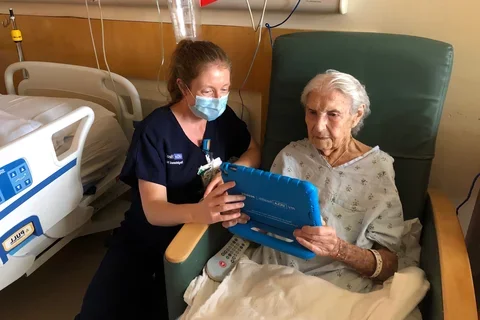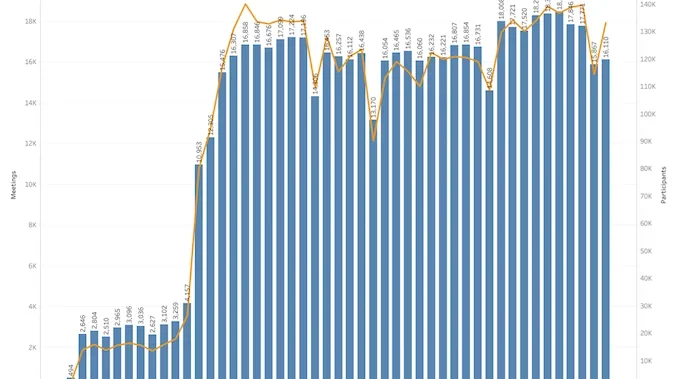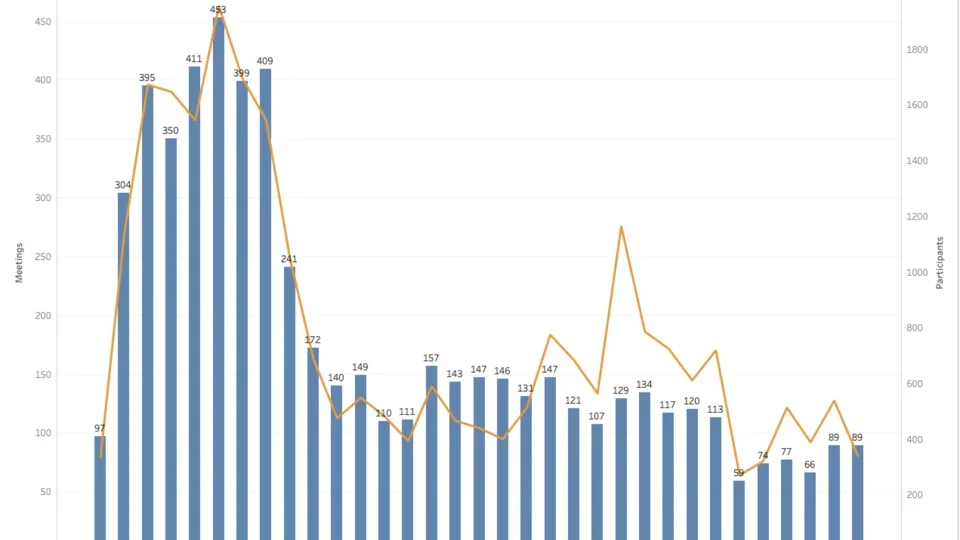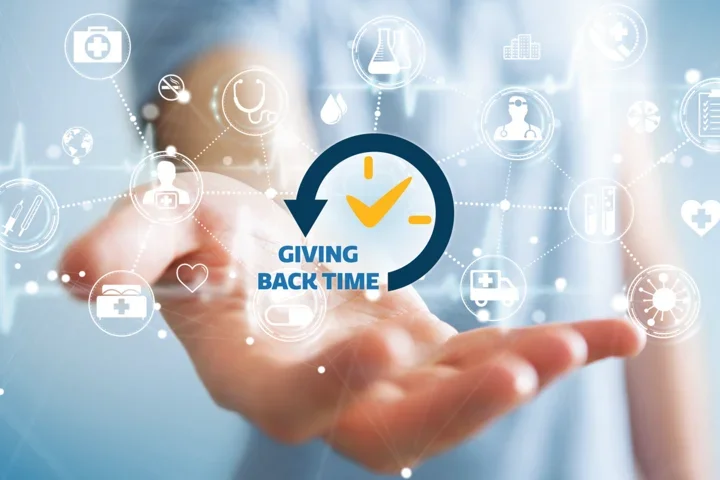Staying connected during a pandemic

Prior to March 2020, Zoom was most often used when meeting spaces were not available, to connect with staff in other locations, or simply when in-person meetings were inconvenient. Though the UCLA Health instance of Zoom had been available to all Mednet users since 2018 to augment collaboration and interactions, it wasn’t until this year that Zoom became an absolute and vital necessity.

Before COVID-19 and the Safer-at-Home order upended our lives, UCLA Health hosted an average of 3,000 meetings per week. The first few weeks as a fully remote workforce, Zoom meeting usage skyrocketed upward 500% to an average of over 16,000 meetings weekly and sustained since. The chart below illustrates the new heights Zoom usage reached within the last couple of months. Weeks with a holiday are easily spotted.
While Zoom allowed us to continue our work, Zoom was also vital in helping our patients feel less alone when health orders barred visitors. When doctors needed a way to connect with their patients’ family to complete rounding, our teams worked together to ensure that Zoom on the bedside devices would always be logged in to a guest account. Making the devices ready for a patient to call their loved ones to bring them into the conversation about their care at any moment.
What started as a need for patient care evolved into providing a platform that brought a measure of comfort to our patients amidst the bleakness brought on by the pandemic. Installing Zoom on bedside devices not only made it easier for families to be involved in patient care, but also part of their child birth support system or allowed loved ones to say their goodbyes in end-of-life visits. While a phone call doesn’t replace a physical presence, Zoom allowed for an easy, HIPAA-compliant, and secure alternative.
Multiple teams across UCLA Health IT worked together to make this possible and to allow for staff within the hospital and outside volunteers to come up with new ideas to bring kindness to patients through Zoom. The MyChart Beside team began working with Project Music Heals Us and Salastina to bring private concerts with world renowned Classical musicians to our patients.
A quote from one of our patients shows the immense impact that Zoom on bedside devices had:
I was on a ventilator for 3 days in the ICU and when the nurse woke me up she handed me this iPad with my wife on it and she was talking to me as I woke up. That was the most meaningful thing to me.

In May of 2020, the bedside devices were used to host 450 meetings in a single week with 1,900 participants. This number represents the number of times our patients were able to connect with a loved one, attend a one-on-one concert with musicians, or speak with a volunteer who was able to provide some companionship for geriatric patients.
Zoom’s technical success within UCLA Health is due largely to the Audiovisual Team’s tireless effort from day one to ensure that everyone had access and the MyChart Beside and Messaging & Directory Services team for quickly and efficiently pushing Zoom onto bedside devices. But the platform’s greatest success came from our community who found creative and innovative ways to stay connected and continue to create and maintain relationships even when we were forced to be distant.
Zoom Statistics:
Before Safer-at-Home
- Avg # of meetings per week: 3000
- Avg # of meeting hours per week: ~3200
- Avg # of participants per meeting: 5.3
After Safer-at-Home
- Avg # of meetings per week: 16000
- Avg # of meeting hours per week: ~15000
- Avg # of participants per meeting: 7.5



